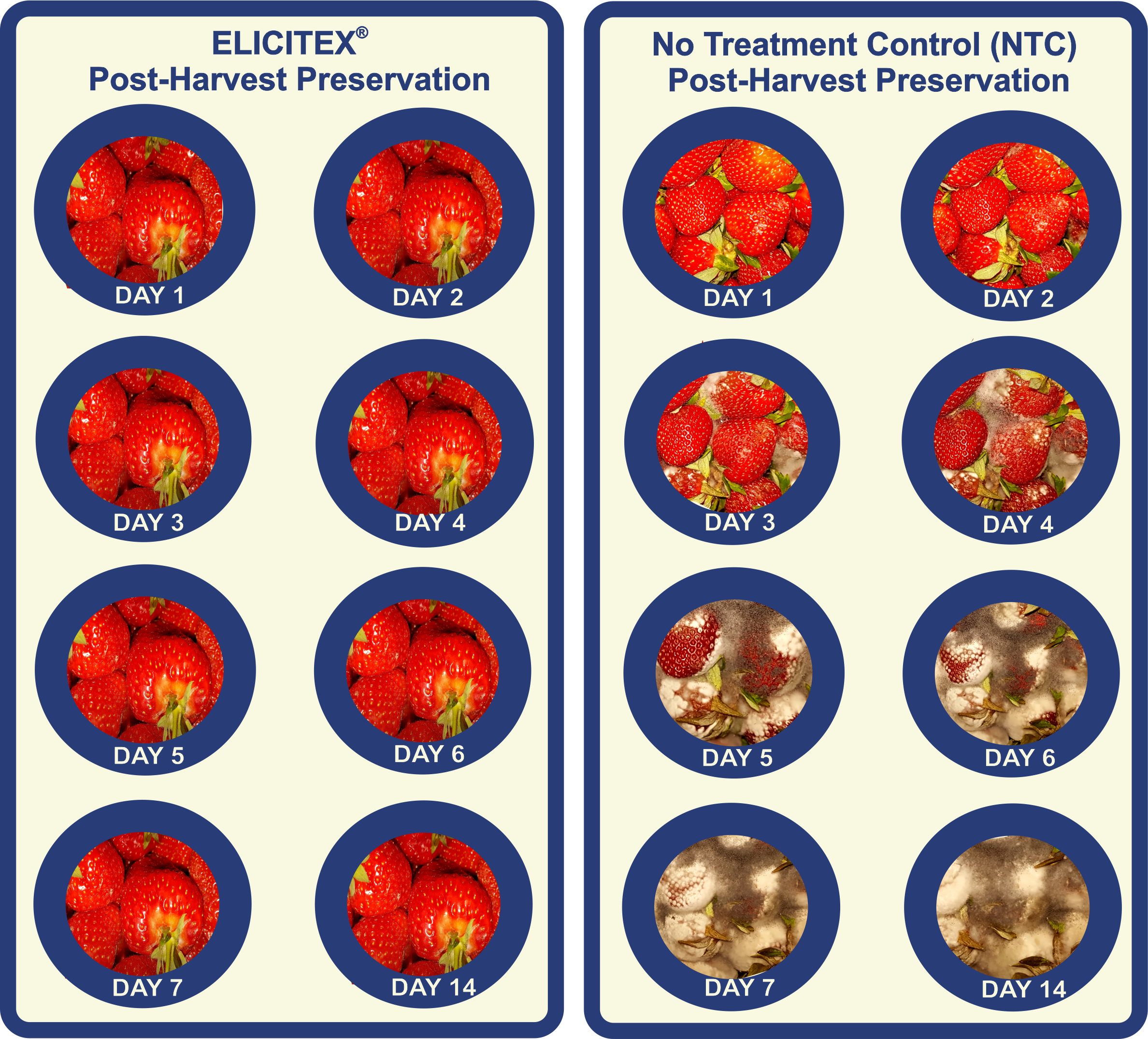ELICITEX For Soft Fruit Growing
Benefits of Use for Soft Fruit Growing
Soft fruits have considerable economic and nutritional value. They are a rich source of beneficial bioactive plant secondary metabolites (PSMs).
Strawberries are a rich source of the PSM flavanoid water soluble vacuolar pigment monomeric anthocyanins (ranging from 200 to 600 mg/kg). The major anthocyanins in strawberries are cyanidin-3-glucoside (3–32%), pelargonidin-3-glucoside (52–90%), and pelargonidin-3-rutinoside (6–17%).
Cyanidin-3-sophoroside, cyanidin-3, 5-diglucoside, cyanidin-3-(2G-glucosylrutinoside), cyanidin-3-glucoside, cyanidin-3-rutinoside, pelargonidin-3-sophoroside, pelargonidin-3-(2G-glucosylrutinoside), pelargonidin-3-glucoside, and pelargonidin-3-rutinoside are the major anthocyanins in red raspberries.
Red raspberries contain ∼92.1 ± 19.7 mg anthocyanins/100 g of fresh fruit in a ratio of 32:1 cyanidin- and pelargonidin-based anthocyanin. Anthocyanins in red raspberries contribute ∼25% of their antioxidant capacity.
Anthocyanins have been implicated in tolerance to stressors as diverse as drought, UV-B, and heavy metals, as well as resistance to herbivores and pathogens. By absorbing high-energy quanta, anthocyanic cell vacuoles both protect chloroplasts from the photoinhibitory and photooxidative effects of strong light and prevent the catabolism of photolabile defence compounds. Anthocyanins also mitigate photooxidative injury in leaves by efficiently scavenging free radicals and reactive oxygen species. Anthocyanins are halochromic and change colour with pH and appear red at pH7 (alkaline) and colourless in very alkaline solutions, where the pigment is completely reduced.
The pharmaceutical industry uses anthocyanins as therapeutic compounds, because they have several potential medicinal qualities, including anti-obesity, anti-cancer, anti-diabetic, neuroprotective and cardioprotective effects. The total anthocyanin content determined by HPLC varies in different studies because of fruit variety, seasonal differences, developmental stage, and variation in the methods used to quantify the compounds.
ELICITEX has been shown to induce rapid and increased production of soft fruit plant secondary metabolites (PSMs) including anthocyanins.
Strawberry, red raspberries and other soft fruits are susceptible to environmental factors and have a short shelf life (3–4 days).
ELICITEX induces disease resistance in soft fruits by boosting the plants innate and adaptive immunity and inducing the production of plant secondary metabolites (PSMs) which also has beneficial effects on crop nutritional density, improvements in organoleptic properties including taste (flavour), smell (odour).
Harvested crops have extended shelf lives thus reducing food waste by delaying crop decay and improving soft fruit firmness.
Active substances are food grade and can be used up to harvest without human toxicity.
Safe for use on all edible crops and degrades rapidly in the environment.
Effective as a plant growth promoter and improves tolerance to osmotic/salinity/drought stress and low and high temperature stress.
USE ON STRAWBERRIES

Elicitation activity prolongs post-harvest shelf life by preventing powdery mildew/grey mould (Botrytis cinerea) but also has beneficial effects on crop nutritional density, improvements in organoleptic properties including taste (flavour), smell (odour), colour, as well as shelf-life and customer satisfaction.
USE ON STRAWBERRIES

Elicitation of strawberry (Fragaria x ananassa), days post anthesis (DPA). Anthesis is the period during which a flower is fully open and functional.
ELICITEX treatment induces rapid production of the red anthocyanin pigments in strawberries.
MAVEN® TRIPLE P® and ELICITEX MIST® are registered trademarks owned by Maven International Limited
